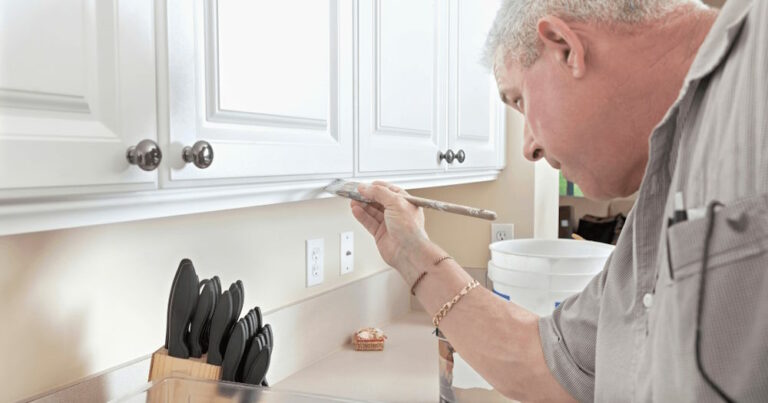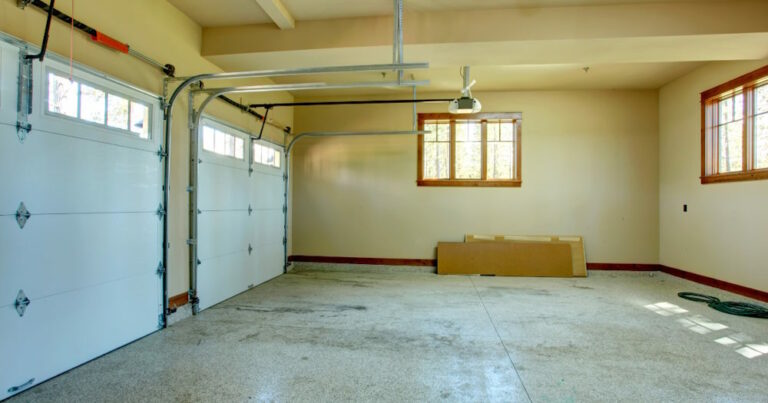Paint can completely transform the look and feel of any room in your home. Whether you’re looking to create a cozy atmosphere or add a pop of color, interior house painting ideas are the perfect way to refresh your space.
In this article, we’ll explore a variety of creative ideas and techniques that will help you transform your home. From choosing the right interior paint colors to experimenting with unique finishes, you’ll find plenty of inspiration to get started.
Key Takeaways
- Interior house painting ideas can help you create a fresh, stylish look for any room in your home.
- The right colors can completely change the mood and atmosphere of a space.
- Different paint finishes and textures can add depth and character to your walls.
- Accent walls can create a focal point and add visual interest to your room.
- Painting techniques can create unique effects and add personality to your home.
Choosing the Right Colors for Your Interior
Choosing the right colors for your interior is crucial for creating the desired mood and atmosphere in each room. The colors you select can impact the perception of the space and affect how you feel when in it. Here are some tips to help you select the perfect colors for your interior house painting project.
Consider Your Existing Decor
When selecting colors, consider the existing decor in the room. You want to choose colors that complement your furniture, artwork, and accessories. Look for colors that can tie the room together and create a cohesive look.
Think About the Mood You Want to Create
Colors can have a significant impact on our emotions and can create different moods. For example, blue can be calming and relaxing, while red can be energizing and passionate. Think about the mood you want to create in each room and choose colors that align with that mood.
Don’t Be Afraid to Go Bold
Choosing bold colors can be intimidating, but they can also add personality and excitement to a room. If you’re hesitant about using bold and brighter colors on all walls, consider using them on an accent wall or in smaller doses, such as through accessories or artwork.
Test Your Colors
Before committing to a color, test it out in the room. Paint a small section of the wall and observe how the color looks in different lighting throughout the day. This will help you determine if the color is the right fit for the room.
Consider the Color Wheel
The color wheel can be a helpful tool when selecting colors. Complementary colors, which are opposite each other on the color wheel, can create a bold and dynamic look when used together. Analogous colors, which are next to each other on the color wheel, can create a more harmonious and calming effect.
By keeping these tips in mind, you can choose the right colors to transform your interior. Don’t be afraid to get creative and make a statement with your color choices!
Interior Paint Finishes and Textures

When it comes to painting the interior of your house, selecting the right paint finishes and textures can make a significant impact on the overall look and feel of your space. From creating a subtle, understated effect to adding depth and character, the right paint finishes and textures can transform your wall into a work of art.
One of the most popular interior paint finishes is a matte finish as it provides a smooth, uniform look that hides wall imperfections while giving a modern, contemporary vibe. If you want to add some shine and depth to your space, a glossy finish is a great option. It reflects light, creating a luminous effect that can brighten up any room. A semi-gloss finish is a great compromise between these two options, making it ideal for high-traffic areas like kitchens and bathrooms.
Textures can add a unique feel to your walls. You can choose from a variety of options, such as stenciling, faux painting, or even adding a texture coat to create a three-dimensional effect. For example, a textured accent wall can help make a room more interesting and visually appealing.
| Finish/Texture | Description |
| Matte | A non-reflective finish that hides imperfections and gives a modern look |
| Glossy | A shiny satin finish that reflects light, making a space look brighter and more luminous |
| Semi-gloss | A compromise between the matte and glossy finishes. Ideal for high-traffic areas like kitchens and bathrooms. |
| Stenciling | A process of applying paint with a stencil to create a unique pattern or design on the wall. |
| Faux painting | A technique of using paint to create the look of a different material, such as wood or stone. |
| Texture coat | Used to create a three-dimensional effect on the walls by adding texture to them. |
No matter which paint finishes and textures you choose, it’s essential to test them in different lighting conditions and at various times of the day. This will help you understand how the colors and textures react to different lighting conditions and will help you make the right decision.
So, whether you want to add some drama to your walls and interior design or keep things subtle and understated, the right paint finishes and textures can help you achieve your desired look.
Accent Walls and Focal Points
An accent wall is one of the easiest and most effective ways to draw attention to any point in any room. By painting a single wall a contrasting or complementary color to the rest of the room, you can instantly draw attention to that area and create a dynamic visual impact.
When selecting an accent wall, consider the following:
- Choose a wall that naturally draws the eye, such as one with a fireplace, a large window, or a piece of artwork.
- Avoid walls with too much clutter, as this can detract from the focal point.
- Make sure the accent color complements the existing color scheme in the room.
To further enhance the focal point, consider adding decorative elements such as wall sconces, a gallery of artwork or family photos, or a striking piece of furniture.
For a bolder statement, try painting all the walls in a room a neutral color and selecting one wall to paint a bright or darker shades. This technique can create a stunning visual effect and add depth to the space.
“Accent walls are a great way to add a pop of color and create a focal point in any room. Just be sure to choose the right wall and color to make the biggest impact.”
Creating Depth and Dimension with Paint
One of the most exciting aspects of interior house painting is the ability to create the illusion of depth and dimension with paint. By using various painting techniques, you can add interest and personality to any room in your home.
Ombre Walls
Ombre walls are a beautiful and trendy way to create depth and dimension with paint. This effect features a gradient of colors that blend seamlessly together to create a stunning visual effect on your walls. To achieve this look, start with the lightest shade at the top of the wall and gradually darken the color as you move towards the bottom. You can use as many colors of the same shade as you like to create a unique and customized ombre effect.
Stripes and Patterns
Another way to create visual interest with paint is by adding stripes or patterns to your walls. Stripes can make a small space appear larger by drawing the eye upwards, while patterns can add architectural interest to a plain wall. When selecting colors, be sure to choose hues that complement each other and create a cohesive look.
Color Blocking
Color blocking is a great way to add depth and interest to a room by using different colors in distinct portions of a wall. You can choose contrasting colors or use different shades of the same color to create a modern and stylish look. Use painter’s tape to create crisp lines and ensure a flawless finish.
Texture Techniques
Textures like stenciling and faux painting can add dimension and character to your walls. Faux painting can mimic the look of marble or wood, while stenciling can add intricate patterns to your walls. These techniques require a bit more time and effort but can create stunning visual effects that can transform a room.
By using these interior house painting ideas, you can add depth and dimension to your walls and create a unique and personalized space in your home. Don’t be afraid to experiment with different techniques and color palettes – the possibilities are endless!
Painting Techniques for Unique Effects
Are you tired of plain walls? Want to add some personality and uniqueness to your home? Look no further than these painting techniques that can help you achieve stunning and unexpected results.
Color washing: This technique involves applying a thin layer of paint over a base coat and then partially removing it with a cloth or sponge to create a soft, muted look. It’s a great way to add depth and texture to a room.
Tip: Experiment with different colors and layering techniques to create a multidimensional effect.
Sponge painting: Create a fun and playful look by using a sponge to apply paint to your walls. It’s a simple technique that can add a playful touch to any room.
Rag rolling: This technique involves rolling a bunched-up rag or towel over wet paint to create a textured, patterned effect. With rag rolling, you can add a touch of elegance or rustic charm to your walls, depending on the colors and technique you choose.
Step-By-Step Guide for Sponge Painting
| What you’ll need: | Sponge | Paint tray | Paint roller | Painters tape |
| Step 1: | Clean your walls and tape off any areas you don’t want to paint. | |||
| Step 2: | Apply a base coat of paint and let it dry completely. | |||
| Step 3: | Pour your paint into a paint tray and dip your sponge into the paint. | ✔️ | ✔️ | |
| Step 4: | Dab the sponge onto your wall, rotating it as you go to create a random pattern. | |||
| Step 5: | Let the paint dry and apply a second coat if necessary. |
These are just a few techniques to get you started. Don’t hesitate to experiment with different painting techniques to add a unique touch to your home. With a little practice and creativity, you can create stunning effects that will make any room stand out.
The Power of White Paint
White paint is a timeless and versatile choice for interior house painting. Whether you opt for a pure white, a warm ivory, or a cool gray-toned shade, white paint can transform a room into a clean, fresh, and airy space that exudes calmness and serenity.
But white doesn’t have to be boring! There are a plethora of creative ways to use white paint to enhance the beauty and uniqueness of your home. Here are some inspiring ideas to get you started:
| Idea | Description |
| Monochromatic white | Create a pure and serene ambiance by using white on walls, ceiling, and trim. Add texture and warmth with white furnishings, accessories, and fabrics. |
| White as a backdrop | Use white as a canvas to showcase colorful art, textiles, or furniture. This will make the room feel light and bright while still providing visual interest. |
| White and wood | Pairing white with natural wood tones creates a warm and inviting atmosphere. Use white on walls and trim to contrast with wood flooring, beamed ceilings, or cabinetry. |
| White and black | The combination of white and black creates a classic and timeless look. Use white on walls and trim and add bold black accents in the form of furniture, lighting, or artwork. |
White paint can also be used to brighten up dark or small spaces. By reflecting light, white paint helps make a room feel larger and more open. Additionally, white can be used to visually unify an open floor plan by creating a cohesive and consistent backdrop.
When choosing white paint, consider the undertones and natural light in your home. Some whites have cool blue or gray undertones, while others have warm yellow or beige undertones. Test samples on your walls to see how they look throughout the day and under different lighting conditions.
Finally, don’t be afraid to mix and match different shades of white to add depth and interest to your space. A creamy white on the walls can be paired with a bright white trim or ceiling to create a subtle contrast.
Transform your home with the timeless beauty of white paint. These interior house painting ideas demonstrate how this classic shade can bring character, warmth, and elegance to any room.
Painting Ceilings and Trim
When it comes to interior house painting ideas, don’t forget about your ceilings and trim! These surfaces are often overlooked but can have a big impact on the overall look and feel of a room. Here are some tips and ideas for painting ceilings and trim to enhance your home:
Painting Ceilings
Painting your ceiling can add depth and dimension to a room, but it can also be a tricky job. Here are some things to keep in mind:
- Choose a paint color that complements the walls and decor of the room. A lighter shade than the walls can make the ceiling appear higher, while a darker shade can make the ceiling feel lower.
- Use a flat or matte finish paint for the ceiling to avoid highlighting imperfections or uneven surfaces.
- Consider using a textured paint or adding a subtle sheen for a unique look.
- Take your time and use a steady hand when cutting in around the edges.
Painting Trim
Trim refers to the woodwork around doors, windows, and baseboards. Painting your trim can make it pop and enhance the overall architectural details of a room. Here are some tips for painting trim:
- Select a paint color that complements the wall color and decor of the room. A contrasting color can add interest and drama.
- Consider using a gloss or semi-gloss finish for the trim to make it stand out and provide durability.
- Use painter’s tape to protect the walls and ensure clean, straight lines.
- Take your time and use a small brush to carefully paint the trim without getting paint on the walls or adjacent surfaces.
By painting your ceilings and trim, you can add a unique touch to your home and enhance its overall appearance. Remember to choose colors and finishes that complement the rest of the room and take your time to ensure a clean, professional-looking finish.
Paint and Lighting
When it comes to selecting paint colors for your interior, it’s important to consider the lighting in each room. Natural and artificial lighting can significantly affect how colors appear, creating either a warm or cool tone.
If you have a room with plenty of natural light, you may want to opt for cooler colors such as blues, greens, and purples. For rooms that don’t get much natural light, warmer colors like yellows, oranges, and reds can help to create a cozy and inviting atmosphere.
Another factor to consider is the type of artificial lighting in each room. Different light bulbs can cast different hues, affecting the way colors appear. For example, fluorescent lighting tends to produce a bluish tint, while incandescent bulbs create a warmer, yellowish glow.
A good way to test paint colors under different lighting conditions is to paint a sample patch on your wall and observe it at different times of day and in different lighting conditions. This will help you determine if the color is the right fit for your room.
When selecting paint finishes, keep in mind that glossy finishes reflect more light, while matte finishes absorb more light. This means that glossier finishes will amplify the effect of artificial lighting, while matte finishes will help to create a more subdued ambiance.
Conclusion

In conclusion, these interior house painting ideas offer a multitude of possibilities for transforming your home. By choosing the right colors, finishes, and techniques, you can create a personalized space that reflects your unique style and enhances the overall atmosphere of your home.
Start Small
If you’re new to interior house painting, we recommend starting with a small project to build your confidence. Consider painting an accent wall or updating a piece of furniture with a fresh coat of paint. From there, you can gradually tackle larger projects and experiment with bolder color choices and techniques.
Personal Touch
Remember that the most important aspect of any home decor project is to create a space that truly reflects your personality and style. These interior house painting ideas are just a starting point. Don’t be afraid to get creative and make it your own!
Thank you for reading, and happy painting!
FAQ
Can I paint over wallpaper?
Yes, it is possible to paint over wallpaper. However, it is important to properly prepare the surface by cleaning and smoothing any imperfections. It may also be necessary to apply a primer before painting to ensure good adhesion.
How long does it take for paint to dry?
The drying time of paint can vary depending on factors such as humidity, temperature, and the type of paint used. In general, most interior paint will dry to the touch within a few hours, but it can take up to 24 hours or more for the paint to fully cure and reach its maximum hardness.
How do I clean painted walls?
To clean painted walls, use a mild detergent mixed with warm water and a soft sponge or cloth. Gently scrub the walls in a circular motion, being careful not to scrub too hard and damage the paint. Avoid using abrasive cleaners or scrub brushes, as they can remove the paint or cause it to fade.
What is the best way to paint ceilings?
When painting ceilings, it is recommended to use a roller with an extension pole for easier reach. Start by cutting in around the edges with a brush, and then use the roller to apply the paint in even, overlapping strokes. It’s also important to protect the floor and furniture with drop cloths when painting ceilings.
Can I paint over a dark color with a lighter color?
Yes, it is possible to paint over a dark color with a lighter color. However, it may require multiple coats of paint to achieve complete coverage. It is recommended to use a primer before applying the lighter color to ensure better coverage and color accuracy.
How do I fix paint drips or brush marks?
If you notice paint drips or brush marks on your walls, allow the paint to dry completely and then lightly sand the affected area with fine-grit sandpaper. After sanding, wipe away any dust and apply a thin coat of paint using a roller or brush, blending it with the surrounding area.
Can I paint over glossy surfaces?
Yes, it is possible to paint over glossy surfaces. However, it is important to properly prepare the surface by cleaning and lightly sanding it to provide better adhesion for the new paint. Using a primer designed for glossy surfaces can also help ensure successful paint coverage.
How often should I repaint my walls?
The frequency of repainting walls depends on various factors, such as the quality of the paint, the amount of wear and tear, and personal preference. In general, most interior walls are repainted every 5-10 years. However, high-traffic areas or areas prone to moisture or stains may require more frequent touch-ups or repainting.
Can I paint over oil-based paint with latex paint?
Yes, it is possible to paint over oil-based paint with latex paint. However, it is important to properly prepare the surface by cleaning and sanding it to ensure good adhesion. Using a primer designed for transitioning from oil-based to latex paint can also help ensure successful results.
Can I paint over a textured wall?
Yes, it is possible to paint over a textured wall. However, it may require more paint and a thicker roller nap to ensure good coverage in the textured areas. It is recommended to test a small area first to determine the best technique and ensure satisfactory results.





